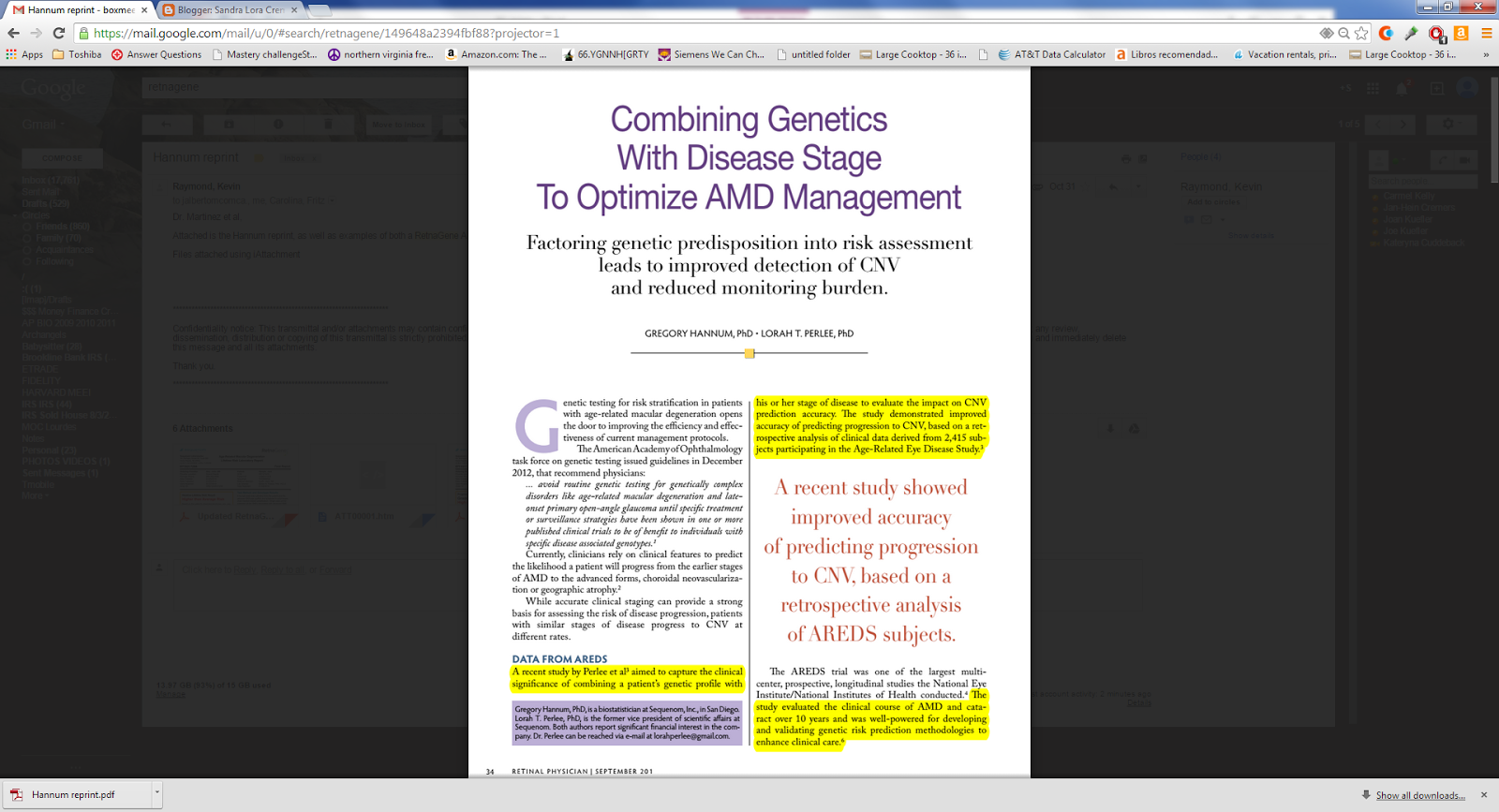Best way to determine one’s risk for Macular Degeneration: RetnaGene
There is still a controversy about which test is the best to determine one’s risk for macular degeneration.
Thus far, I have been impressed with RetnaGene’s profile for testing.
More and more tests will be published to see, though, if knowing your genetic profile makes a difference: see below.
Sandra Lora Cremers, MD, FACS
–
No Link Found Between Two Genotypes and Response to AREDS Vitamins for AMD
To view the full text, please login as a subscribed user or purchase a subscription. Click here to view the full text on ScienceDirect.
Objective
To determine whether genotypes at 2 major loci associated with late age-related macular degeneration (AMD), complement factor H (CFH) and age-related maculopathy susceptibility 2(ARMS2), influence the relative benefits of Age-Related Eye Disease Study (AREDS) supplements.
Design
Unplanned retrospective evaluation of a prospective, randomized, placebo-controlled clinical trial of vitamins and minerals for the treatment of AMD.
Subjects
AREDS participants (mean age, 69 years) who were at risk of developing late AMD and who were randomized to the 4 arms of AREDS supplement treatment.
Methods
Analyses were performed using the Cox proportional hazards model to predict progression to late AMD (neovascular or central geographic atrophy). Statistical models, adjusted for age, gender, smoking status, and baseline AMD severity, were used to examine the influence of genotypes on the response to therapy with 4 randomly assigned arms of AREDS supplement components: placebo, antioxidants (vitamin C, vitamin E, β-carotene), zinc, or a combination.
Main Outcome Measures
The influence of the genotype on the relative treatment response to the randomized components of the AREDS supplement, measured as progression to late AMD.
Results
Of the 1237 genotyped AREDS participants of white ethnicity, late AMD developed in 385 (31.1%) during the mean follow-up of 6.6 years. As previously demonstrated, CFH genotype (P = 0.005), ARMS2 (P< 0.0001), and supplement were associated individually with progression to late AMD. An interaction analysis found no evidence that the relative benefits of AREDS supplementation varied by genotype. Analysis of (1) CFH rs1061170 and rs1410996 combined with ARMS2 rs10490924 with the 4 randomly assigned arms of AREDS supplement and (2) analysis of the combination of CFH rs412852 and rs3766405 with ARMS2c.372_815del443ins54 with the AREDS components resulted in no interaction (P = 0.06 andP = 0.45, respectively, before multiplicity adjustment).
Conclusions
The AREDS supplements reduced the rate of AMD progression across all genotype groups. Furthermore, the genotypes at the CFH and ARMS2 loci did not statistically significantly alter the benefits of AREDS supplements. Genetic testing remains a valuable research tool, but these analyses suggest it provides no benefits in managing nutritional supplementation for patients at risk of late AMD.


